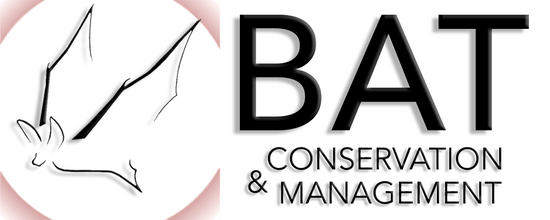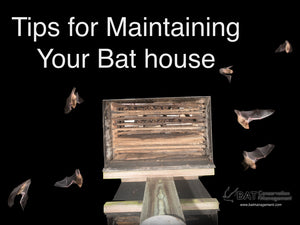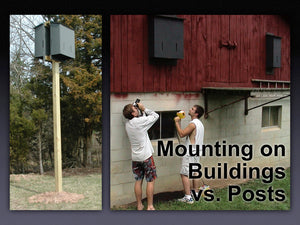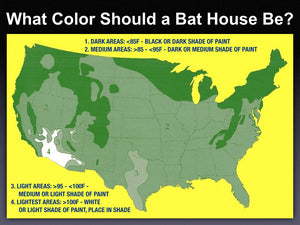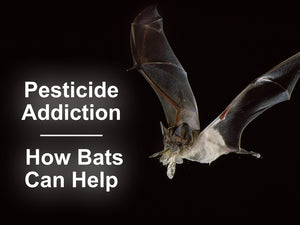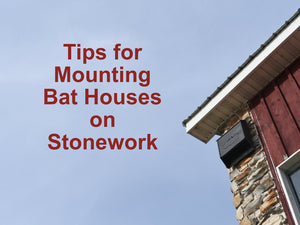Why is "Bat Approved" Important?
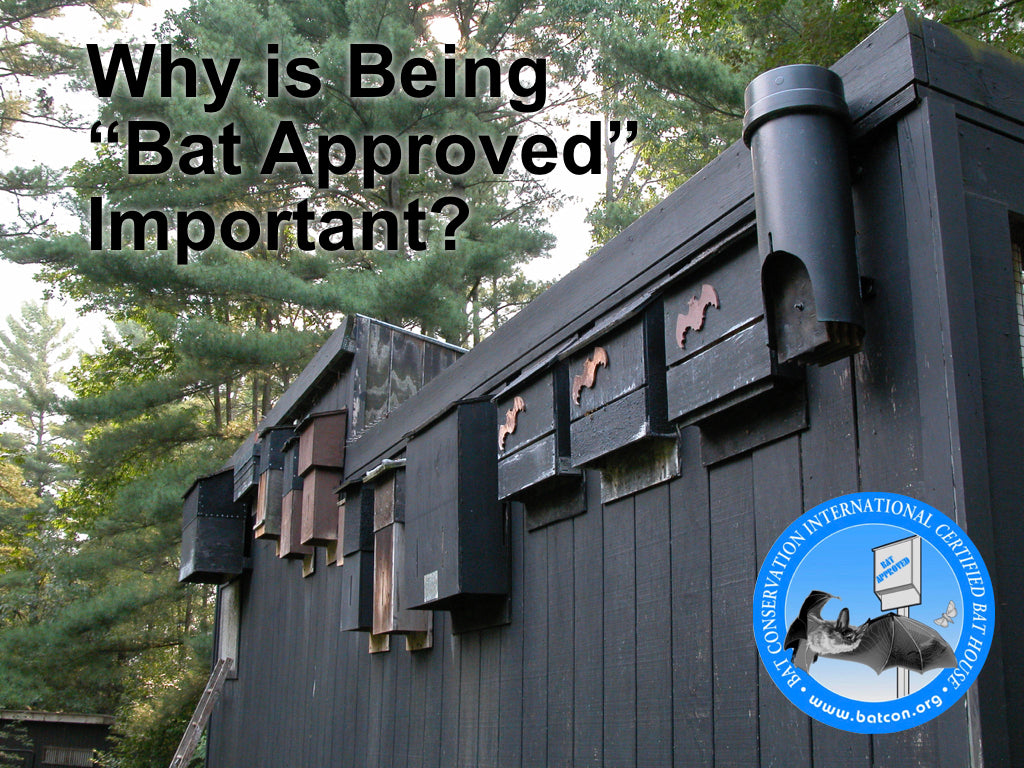
As interest in bats continues to grow, so has the number of bat houses on the market. However, many bat houses are designed and/or constructed such that they are unlikely to be used by bats. Most follow outdated designs which are too small to meet the needs of bats. In addition, instructions for proper installation and treatment are often inadequate. In response, Bat Conservation International created the Bat House Certification Program in 1998 to help manufacturers build high-quality houses that bats will accept.
BCI and numerous volunteer Research Associates in the North American Bat House Research Project have conducted years of research to determine which criteria contribute to success. Results show that tall and wide designs offer greater temperature diversity, a key factor in attracting bats. Proper crevice dimensions, roughened interior and landing areas, ventilation slots, and tight, draft-free construction are also extremely important. Because accurate instructions are just as important as having a good design, it is vital that information be enclosed with each bat house sold concerning correct placement, sun exposure, painting, habitat, and other variables.
Manufacturers who wish to earn the “Bat Approved” certification must submit a finished bat house to BCI for evaluation. Bat houses will be reviewed according to the guidelines below. Only those houses that meet all 10 criteria will be certified. Manufacturers will be provided with a copy of the evaluation and comments. Designs not meeting BCI’s approval must be resubmitted, after the appropriate changes have been made, in order to gain certification.
BCI’S “BAT APPROVED” GUIDELINES FOR BAT HOUSE DESIGN AND CONSTRUCTION
- Roost chambers must be a minimum of 20 inches tall. Taller is even better.
- The width (side to side) of roost chambers must be at least 14 inches. Greater widths are preferred. “Rocket style” houses with continuous (360 degree) chambers are an exception. Depending on materials used, bat houses with roost chambers wider than 16 inches may require spacer blocks between partitions.
- Roost partitions must be carefully spaced 3/4 to 1 inch apart (front to back), regardless of the number of chambers. The best crevice size for most North American bats is 3/4 inch. Houses built specifically for larger species (pallid bats and Wagner’s bonneted bats), with a combination of 3/4 and 1 ½-inch chambers, may be acceptable, provided houses are advertised for said species. Advertising must also state that 1 1/2-inch chambers are more attractive to wasps and other non-target animals, requiring more frequent monitoring.
- Bat houses must possess a suitable landing area. Either a 3- to 6-inch landing area must extend below the entrance (by extending the length of the backboard), or partitions may be recessed 3 to 6 inches, such that bats may land on the inside walls of the bottom of the bat house.
- Interior surfaces and landing areas must have adequate texture to provide footholds for bats. Rough-cut wood may suffice, or surfaces can be mechanically grooved, roughened, or scored (horizontally only) at 1/4 to ½-inch intervals, approximately 1/16 inches deep. Roost surfaces can also be covered with a durable plastic mesh (we recommend 1/8- or 1/4-inch square mesh [product #s 1672 or 1170] available from Internet, Inc. [1-800-328-8456] or Aquamasters [423-252-2079]). Plastic mesh must be securely stapled every two inches (up, down, and across) such that it does not sag, buckle, or curl anywhere. Mesh must not have sharp edges (trimming may be necessary). Staple points must not protrude into roost chambers, which could injure bats. Metal mesh, hardware cloth, or aluminum window screen is not acceptable, as these can cause injury to bats.
- Screws, staples, nails, mounting hardware, or other sharp objects (including splinters) must not protrude into roost chambers. All hardware and metal components must be exterior grade (coated, brass, galvanized, etc.). With few exceptions, all major components must be assembled with screws. Nails, brads, or staples alone do not hold well over time. Any exposed metal edges (e.g. roofs) must be smooth.
- Half-inch tall ventilation slots must be provided and be placed no more than 1/3 (one-third) the distance from the bottom. Front vents must be as long as a house is wide, and side vents (optional) should be approximately 6 inches tall by ½ inch wide. Decorative vents may be allowed, provided their size and position are adequate. Unvented wooden houses are acceptable if intended for cool climates only, which must be clearly stated in enclosed literature and advertising.
- Any plywood used must be exterior grade (e.g. ACX, T1-11, BCX). Boards should come from quality stock such as cedar or pine. Pressure- or chemically-treated wood must not be used, as they contain substances which may be harmful to bats.
- Overall construction must reflect that the bat house is a quality product. Bat houses must be durable and tightly constructed (no unplanned gaps). Caulking or gluing exterior joints (preferably during assembly) is required to prevent drafts. If not caulked or painted prior to sale, adequate instructions must be provided for customers to caulk and paint the house. Latex caulk and exterior-grade, water-based paint or stain is recommended. Bat houses must be durable and long-lasting, as they may not be occupied for two years or more.
- Advertising and any instructions or literature included with bat houses must be approved by BCI. Unsubstantiated or misleading claims (e.g. “no more mosquito problems”) will not be permitted. Instruction sheets included with bat houses must contain adequate information on painting, sun exposure, mounting height, mounting sites, and recommended distances to water and obstacles.
Revised 6/2003

- Tags: bat house
- John Chenger
